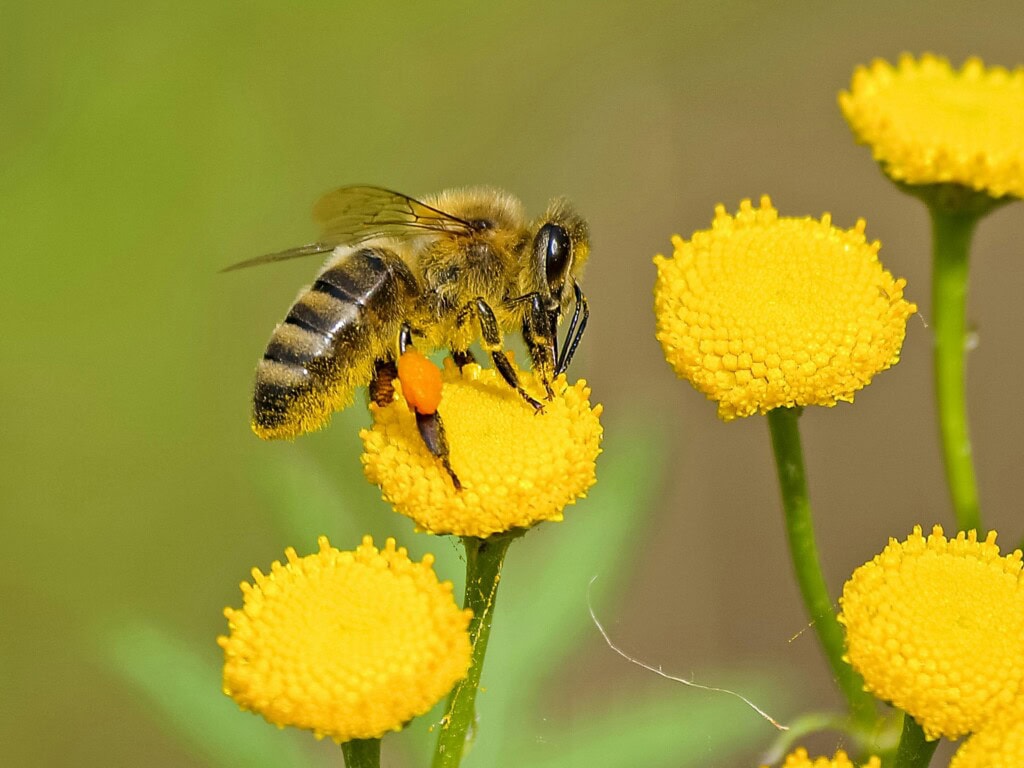
Bees have been buzzing across our planet for around 120 million years, evolving into over 20,000 species now found on every continent, with only a single exception, Antarctica. From the tiny, often-overlooked sweat bee to the familiar and beloved bumblebee, these remarkable pollinators have adapted to more environments than most people think. Nowadays, you can find our bee friends everywhere, from forests and deserts to backyard gardens and megacities. Their ability to thrive in such diverse habitats has made bees essential players in the health of ecosystems worldwide, supporting both wild plant life and agricultural crops through pollination.
Honeybees, arguably the most well-known pollinators, were originally native to Europe, Asia, and Africa but have since spread globally through human domestication and cultivation. These bees are essential to our food system, pollinating a vast array of crops we consume daily. Fruits and vegetables such as almonds, apples, blueberries, cucumbers, and pumpkins all depend on pollination to thrive. In fact, the global economic value of bee pollination is estimated in the hundreds of billions of dollars. Without pollinators like bees, farmers would struggle to grow many of the foods we rely on, leading to reduced crop yields, higher prices, and far less variety in our grocery stores. In this way, bees serve as silent but vital partners in feeding the world.
However, honeybees aren't the only pollinators making this possible. Wild bees—including mason bees, carpenter bees, and leafcutter bees—play an equally important and often underappreciated role. In some cases, they're even more efficient pollinators than honeybees, thanks to their unique behaviors, body structures, and plant-specific adaptations. For example, bumblebees are capable of "buzz pollination," a method that involves vibrating their bodies to release pollen from certain flowers—a technique crucial for crops like tomatoes and peppers. These diverse wild bee species expand and strengthen the pollination network that supports both natural ecosystems and modern agriculture.
The global health of bee populations presents a complex and evolving picture, marked by both growing concern and increased efforts to safeguard their future. Some of the primary threats standing before modern bee populations include pests, parasites, disease and climate change.These factors place intense pressure on bee populations, pushing some species, like the rusty patched bumblebee, onto endangered species lists.
Despite the challenges facing bee populations, there are promising signs of progress in both scientific research and conservation efforts. Advances in bee health research have led to the development of new vaccines aimed at combating common bee pathogens, such as American foulbrood, offering a potential safeguard against some of the most destructive bee diseases. Beyond the lab, efforts like urban beekeeping is gaining traction as cities around the globe adopt rooftop hives as part of broader sustainability and biodiversity initiatives. These urban efforts not only support local ecosystems but also help raise awareness about the importance of pollinators in densely populated areas.
Teaching children about bees is more than just a biology lesson—it's a meaningful way to cultivate lifelong environmental awareness and a sense of responsibility. When students learn that bees are responsible for the apples in their lunchboxes and the pumpkins in their autumn decorations, they begin to understand the profound connections between their everyday lives and the natural world. This awareness fosters not only curiosity but also early habits of scientific thinking and environmental stewardship.
Integrating bee-related topics into science lessons, literacy activities, or even creative art projects gives students hands-on opportunities to explore real-world energy and environmental concepts like biodiversity, sustainability, and conservation in ways that are tangible and age-appropriate. The challenges bees face, from declining native populations to the impacts of climate change, offer a powerful and accessible lens through which students can also begin to explore broader environmental themes such as habitat loss, urban ecology, and energy systems.
This World Bee Day, let it be more than just a celebration; let it be a call to action. Whether you plant a few native flowers, reduce your use of pesticides, or introduce your students to the fascinating world of pollinators, every small effort counts. By engaging and educating the next generation, we help ensure a future where bees and the ecosystems they support continue to flourish.Want to explore more about energy, the environment, and how to bring these important topics into your classroom? Visit Watt Watchers of Texas to discover a variety of insightful articles, hands-on lessons, and engaging activities designed especially for educators like you!
We'd love to help answer any questions and help you get started! Drop us a line and we'll get back to you as soon as we can.
Watt Watchers of Texas
204 E. Dean Keeton Street, Austin, Texas 78712
contact@watt-watchers.com
Nos encantaría contestarle cualquier pregunta que tenga y ayudarle empezar! Envíenos un mensaje y nos pondremos en contacto con usted lo antes posible.
Watt Watchers de Texas
204 E. Dean Keeton Street, Austin, Texas 78712
contact@watt-watchers.com